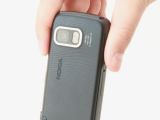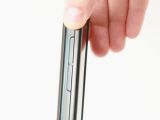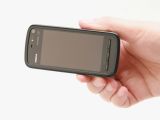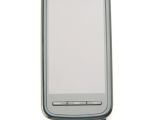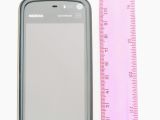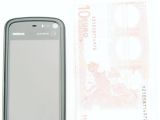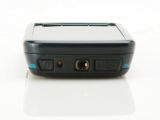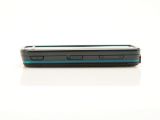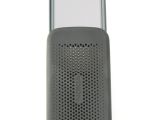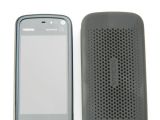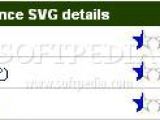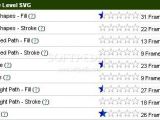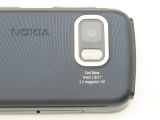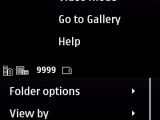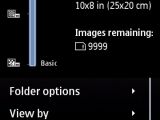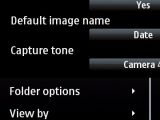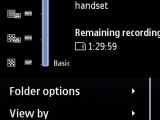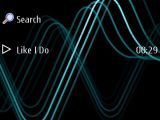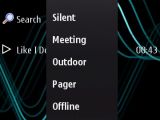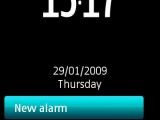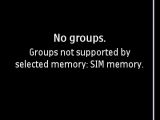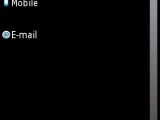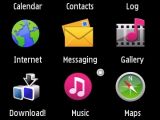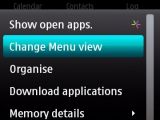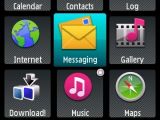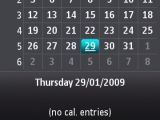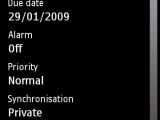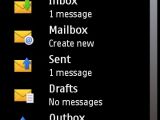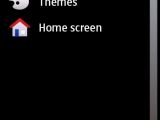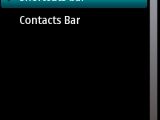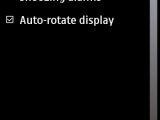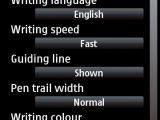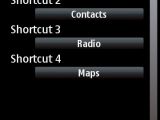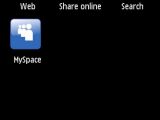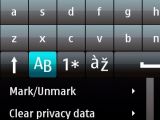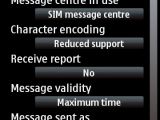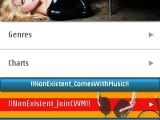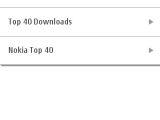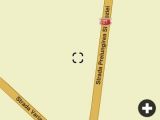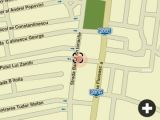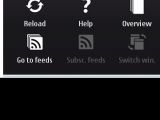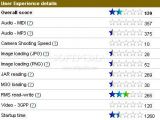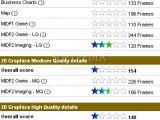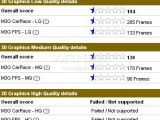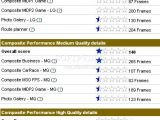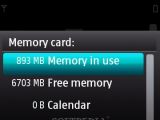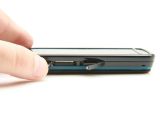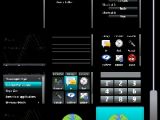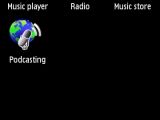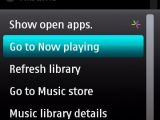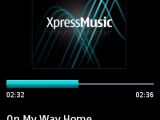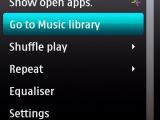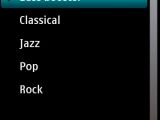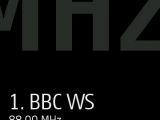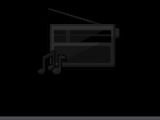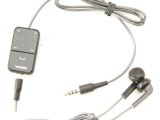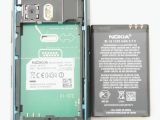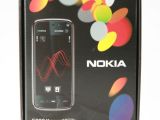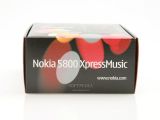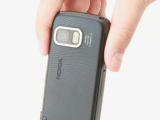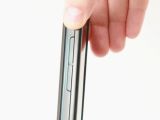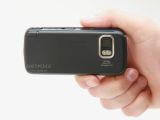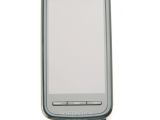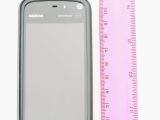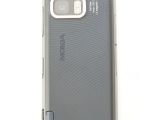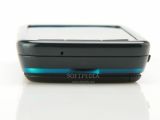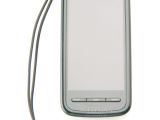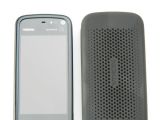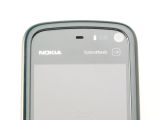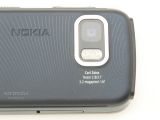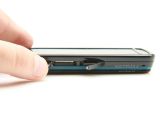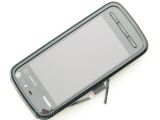Nokia 5800 XpressMusic, code-named Tube, is the latest Nokia addition to the XpressMusic series portfolio, but the first to feature a touch interface. The company's Symbian operating system has been updated to the 5th version, which is compatible with touchscreen, and I think it's pretty obvious why Nokia chose an XpressMusic device to implement its first touch compatible OS – touch control for music phones is one the most successful recipes nowadays.
Moreover, the large touchscreen with a weird resolution (360x640 pixels) makes it also a good tool for Internet browsing. Still, one of the greatest trumps of the handset is its cheap price compared to other touchscreen phones on the market. Furthermore, Nokia made a wise choice by targeting a different consumer market, people interested in music phones rather than the rest of the touchscreen devices, which are targeting business people. The business phone market is already oversaturated with touchscreen handsets by brands such as HTC, Eten, Palm and the newcomers Sony Ericsson and BlackBerry.
Announced in October 2008, Nokia 5800 XpressMusic was effectively launched on the market one month later, in November. The 5800 candybar phone can be acquired for only USD 400$ unlocked and with an 8GB microSD card included in the sales package. Potential buyers can opt for any of the three colors available: Black, Red and Blue.
Design
Nokia promised a good-looking, stylish device that would top-up all the XpressMusic phones available on the market. Pictures leaked on the Internet before its actual release, revealed a cool handset with a candybar form factor, a little bit too narrow, but with a large touchscreen. Before actually holding it in my hands, I was afraid that it would be too heavy or too bulky. It wasn't like that after all, as Nokia 5800 XpressMusic is very well balanced and because it's a little bit larger than expected, its thickness doesn't give the impression of bulkiness.
The candybar is manufactured from two different kinds of plastic. The one on the front and both sides is very well polished and shiny, which makes the phone look exquisite and expensive. The back cover is made of a rubber-like plastic, which, as opposed to the one on the front, is frosted. When you put it on any kind of surface the rubber-like plastic on the back cover ensures that the phone won't glide or fall off.While the shiny compound on the front will catch a few fingerprints, that's not the case with the large touchscreen, which gets cover in grease in no time. After only 1 day of use, the phone will look obnoxious if you don't wipe it at all, as I did. Anyway, its construction looks pretty sturdy with no apparent flaws.
Nokia 5800 XpressMusic lacks a keypad and a QWERTY keyboard. What you'll get instead are three keys below the huge touchscreen: Green key (Accept calls), Red key (Reject calls), Middle key (Main menu). It is pretty obvious what they do, so I won't bug you with more details. Above the screen, on the right, you'll notice an Ambient light sensor, a secondary video-call camera and for those who didn't know, a touch key that opens the Multimedia bar. The touch key icon is pictured near the XpressMusic logo, but you can check out the pictures for a closer look.
The right side of the phone features a dual volume key, a security key, which locks/unlocks the display when it is slid down, and a dedicated camera key. The left side of the handset features two slots covered with plastic stripes. In one of them you'll discover the 8GB microSD slot card that comes with the phone, while in the other one you'll have to insert your SIM card. That means that both cards (memory and SIM) are hot-swappable, so you won't need to take off the back cover to change either of the two. The back of the phone features a 3.2 Megapixel camera with auto-focus and dual LED flash. The camera is protected by a metallic frame to avoid possible scratches. At the bottom left you'll discover a very slim stylus made of cheap plastic. I haven't used it that much because I didn't like it. On top of the phone no less than three ports have been crowded: microUSB, 3.5mm jack and charger. There's also the usual dedicated power button, which powers on/off the device, but can also be used to lock the screen, remove the memory card or change the profiles. Overall, I consider Nokia 5800 XpressMusic a huge step forward for the company's design team, which finally developed a good-looking product, after so many fails. Display and Camera Nokia 5800 XpressMusic features a 3.2 inch, TFT touchscreen, supporting no less than 16 Million colors. Moreover, the resolution of the screen, 640x360 pixels (16:9 display ratio and 24 bit color depth), makes it a little bit weird at a first glance. The device features proximity sensor for auto turn-off and accelerometer sensor for auto-rotate. With the proximity sensor you can silence a call by turning it upside down. You can also snooze the alarm clock using the same method. The auto-rotate feature is no news for Nokia, and you can use it when you're browsing the Internet, or turn it off if you think it's too sensible and turns your screen in landscape mode when you don't want to. Even though images are showing great on the display and it performs very well under bright sunlight, Nokia used the most common technology for this display. The so-called resistive touchscreen panel is generally the most affordable technology and offers only 75% clarity. Fortunately, resistive touchscreen panels are not affected by dust or water and are one of the sturdiest. The touchscreen lacks the tactile feedback feature. For performance, please check the benchmark results below. The 3.2 Megapixel camera features dual LED flash, autofocus capabilities and 3x digital zoom. It uses Carl Zeiss optics and can save pictures in JPEG/Exif format. Other functions include: Auto Exposure, Self Timer, White Balance, Contrast, Sharpness, Light sensitivity, Color tone. I have found the quality of the pictures quite acceptable, even in low-light conditions. The dual led flash is a real disappointment, but daylight pictures are a little bit above average. The camera doesn't support geo-tagging, even though the device embeds a GPS receiver. Video capabilities are also above average – the candybar can record movies in VGA mode, 640x480 pixel resolution at 30fps. Clips are saved in MPEG-4 format, but you can use the secondary camera on the front of phone to shoot clips at 15fps, 320 x 240 pixel resolution. Overall, without impressing too much, the 5800's camera is well above the rest of the XpressMusic modules and makes a good addition to the device. Menu and Software Nokia 5800 XpressMusic runs Symbian 9.4 operating system, with S60 5th Edition interface. Basically, it's a 9.3 version adapted for a touch interface, which is expected to run all the applications 50-75% faster than the older Symbian version. Also, SQL support is now provided by SQLite. The layout of the menu didn't change too much, except maybe the fact that you can now organize your applications the way you want to. To bring up the Main menu key click the middle key, choose Options/Organise, and put your more often used applications on top, so they'll have their icon more exposed to your finger. That is a good addition, as the Home screen Shortcut bar only features 4 customizable icons. Furthermore, clicking the Multimedia touch key found below the secondary video-call camera will bring up the Multimedia bar, which gives quick access to Music player, Gallery, Mail, Video centre and Internet browser. There's a wide range of tips and tricks that I wrote about, so check them out here and here. First of all I'd like to remark that the touch mechanism is not that responsive as in the iPhone, HTC Touch Pro or G1. I have noticed that you need to push an icon a little bit longer to actually activate it, and while this might be good if you think that you can easily click on another icon by mistake, it can also be a bad thing as it slows your browsing speed. I believe that every access must be made by clicking on an application to select it and afterwards clicking again to actually open it. The scrolling mechanism is a real pain, especially when you browse the Internet, and menu scrolling is also pretty bad. There's no dragging or swiping on the touchscreen, as Nokia didn't implement these functions. Fortunately, some applications can be accessed directly from the Home screen if you know where to look. Alarm clock can be accessed by clicking on the clock in the upper left corner. One click on the battery icon will bring up the connectivity menu, while clicking the General profile will enable you access to Calendar or list of all profiles. Pressing and holding the Menu key (middle key) will bring up the Task manager where you can see what apps are running in the background. The phone doesn't have any business applications, such as Office Mobile or PDF reader, but these can be easily installed afterwards. The menu isn't that well organized anymore, so you get various applications mixed with games and search or localization services. There are two games based on the accelerometer sensor: Bounce and Global Racing Thunder. Unfortunately, control is pretty hard for the racing game and I wouldn't recommend playing it for too long as it gets annoying. Furthermore, there are only a few third-party applications available for Nokia 5800 XpressMusic, but you can put in some Java-compatible apps, as the device features a compatibility mode for Java applications that aren't touchscreen-aware. The system works by using part of the screen for displaying the essential buttons required by the program. Still, I have discovered that not all apps are fully compatible. The device has a variety of input methods: stylus, plectrum and finger touch support for text input and UI control (alphanumeric keypad, full and mini QWERTY keyboard, handwriting recognition). To sum it up, here’s what we get in Nokia 5800 XpressMusic: complex calendar, Notepad, calculator, converter, file manager, recorder, IM. There's no media sub-menu, but you get some dedicated apps under the Music menu: music player, Stereo FM RDS Radio, Gallery, RealPlayer, Podcasting, Music store. Communications Nokia 5800 XpressMusic is a quad-band GSM (850 / 900 / 1800 / 1900) handset, HSDPA 900 / 2100 (3.6 Mbps) compatible, which features GPRS class 32 (100 kbps), EDGE 32 class (296 kbps), High-Speed Circuit-Switched Data (57.6 kbps) and Wi-Fi 802.11 b/g (UPnP technology).U
nfortunately, you don't have a WLAN shortcut on the Home screen anymore to quick access the Wi-Fi. Instead you'll need to click the battery icon and bring up the Connectivity menu, where you'll find the WLAN function. If you want to connect to the Internet, you must first define an Access point (EDGE, WLAN or 3G). You can do that by going to Main menu - Tools - Settings - Connection - Access points and define which access point is to be used whenever a network connection is required (Main menu - Home network – Settings). The handset features a GPS receiver, which works in conjunction with Nokia Maps. I have tested the localization times and I have noticed that Nokia 5800's GPS is one of the fastest. The built-in GPS receiver features the A-GPS function, which makes localization even faster. It quickly pin-points you even when the phone is indoors. Other connectivity tools include Bluetooth 2.0 with A2DP and EDR support, and microUSB for PC synchronization (no charging). The Bluetooth connection reached almost 116 KB/s when sending files and 130 KB/s when receiving, which is way above the average. In terms of messaging, the phone offers a complete solution accepting all available message types. Furthermore, given the fact that it features a virtual QWERTY keyboard, you'll be able to type your messages faster. The message client works with POP3, SMTP, and IMAP4 protocols, and supports more than one email account. Also, it can download headers or full email, and supports attachments. The quad-band (GSM 850 / GSM 900 / GSM 1800 / GSM 1900) network compatible handset has a very good GSM signal reception. The sound is very good at both ends, and pretty loud too. The vibration alert is also above average in intensity, so you don't really need to set it to higher levels. Processor and MemoryNokia 5800 XpressMusic features a single ARM11 CPU running at 434 Mhz. I haven't experienced any lags or freezes.
In terms of memory, Nokia 5800 XpressMusic includes 81 MB internal storage memory and 128 MB SDRAM memory. Besides the 8GB microSD card that comes with the phone, you'll be able to expand the storage space up to 16GB. Multimedia The Nokia XpressMusic series is renowned for its multimedia features, Nokia 5800 falling in the same category. Regardless of the fact that you get all the possible media features that a youngster might need, we can really talk about high-end quality. The stylish nice music player that supports AAC, AAC+, eAAC+, MP3 and WAV music file formats features Equalizer (Bass booster, Classical, Jazz, Pop, Rock and Default), Stereo widening and Bass booster. Files can be automatically sorted by artist, genre, and album. The integrated Stereo FM RDS Radio can record up to 50 base stations and features the Visual Radio functions. Reception is very good and sound is above average. The same goes for the music player sound, which is better than in most XpressMusic devices. The Bluetooth 2.0 with A2DP support enables you to listen to music wirelessly. The 3.5mm jack port is also a good addition as it enables you to change the headphones that are coming with the phone (HS-45). There's also an adapter that features music controls (AD-54). The phone lacks a YouTube client, but movies can be seen with the integrated RealMedia player. You can forward, rewind, pause the clips, or choose to see the movies in full screen. The quality on such a wide screen ratio is amazing. The phone comes with Thievery Corporation videoclip and Batman – Dark Knight trailer. If you've seen the movie you probably noticed that Nokia 5800 XpressMusic makes its appearance in a short scene. Battery The 1320 mAh Li-Ion (BL-5J) battery has an officially stated life expectancy of 406 hours in standby and of about 9 hours in talk time mode. I have noticed that the phone has a very good playback autonomy, whereas the talk time tends to reach about 5-6 hours. ImpressionsI have been pleasantly surprised by the first Nokia device to feature a touch interface. While the design is good, after 2 days of using it I have found that the UI seems to be in development. If Nokia wants to be in the lead on the touchscreen handsets it needs something much better than Nokia 5800 XpressMusic.
The Good
Besides the excellent 3.2-inch display featuring 16M color and the HSDPA support, I'll also enlist as strong points of the phone: Wi-Fi, excellent GPS receiver with Nokia Maps 2.0 Touch, 8GB microSD card included, TV out, 3.5mm standard audio jack, excellent music sound, low price.
The Bad
Unfortunately, one of the weak points is the one that had to be the strongest – the user interface. It seems to be in beta testing and doesn't offer too much functionality. Also, the lack of more business tools, even if it's a music phone, could be annoying for those who want to read a PDF file sometimes.
Sales package 5800 XpressMusic handset 1320 mAh battery (BL-5J) High Efficiency Charger (AC-8) Music Headset with adapter (HS-45, AD-54) Video-out Cable (CA-75U) Connectivity Cable (CA-101) 8 GB microSDHC card (MU-43) Carrying Case (CP-305) Stand (DT-29) Stylus plectrum in wrist strap (CP-306) Extra pen stylus User guide and Quick guide Mini DVD
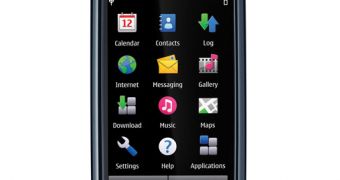
 14 DAY TRIAL //
14 DAY TRIAL // 

